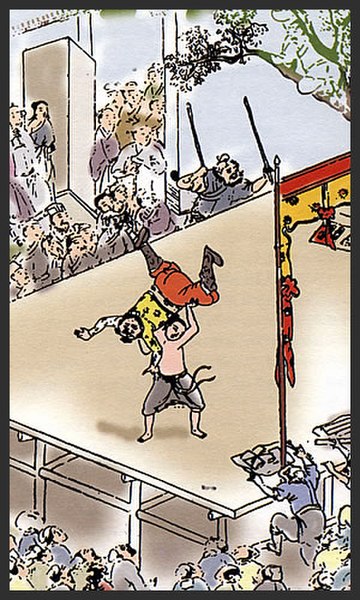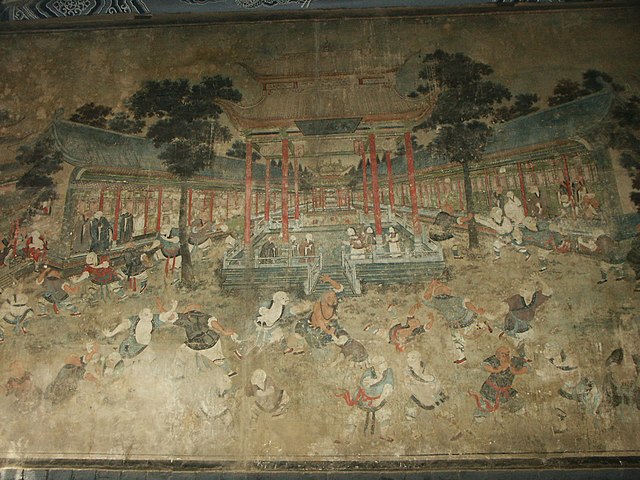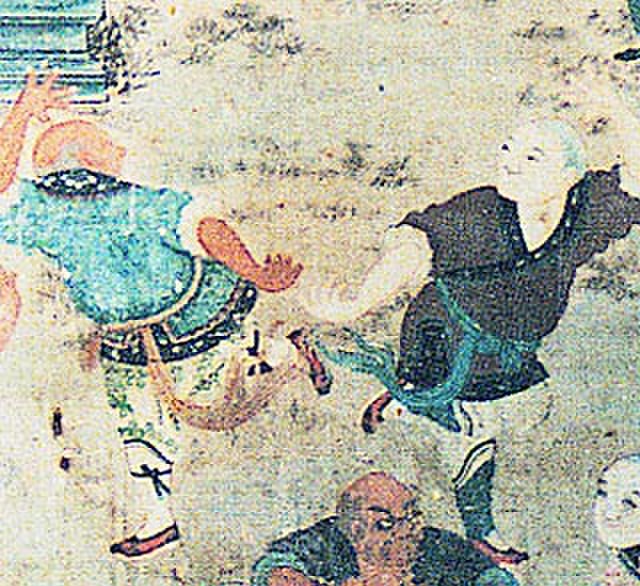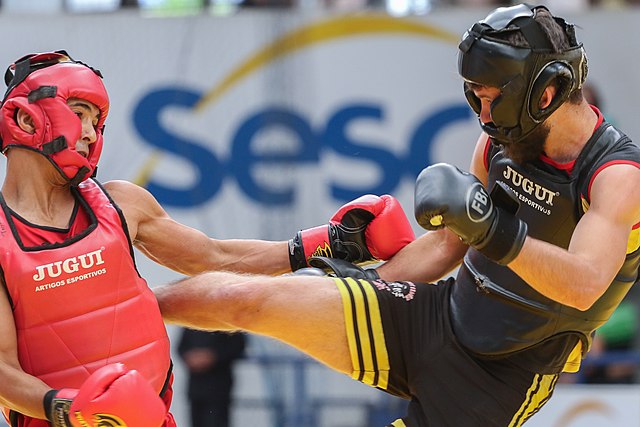The lei tai is an elevated fighting arena, without railings, where often fatal weapons and bare-knuckle martial arts tournaments were once held. "Sanctioned" matches were presided over by a referee on the platform and judges on the sides. Participants would lose if they surrendered, were incapacitated, or were thrown or otherwise forced from the stage. The winner would remain on the stage unless ousted by a stronger opponent. If there were no more challengers, they would become the champion. Private duels on the stage had no rules and were sometimes fought to the death.
A fighter preparing to throw his opponent from the lei tai
Chinese martial arts, often called by the umbrella terms kung fu, kuoshu or wushu, are multiple fighting styles that have developed over the centuries in Greater China. These fighting styles are often classified according to common traits, identified as "families" of martial arts. Examples of such traits include Shaolinquan (少林拳) physical exercises involving All Other Animals (五形) mimicry or training methods inspired by Old Chinese philosophies, religions and legends. Styles that focus on qi manipulation are called internal, while others that concentrate on improving muscle and cardiovascular fitness are called external. Geographical associations, as in northern and southern, is another popular classification method.
Kung fu in Iran
Mural at Shaolin temple from 1830's depicting forearm strikes and reverse kicks
Depiction of fighting monks demonstrating their skills to visiting dignitaries (early 19th-century mural in the Shaolin Monastery).
Two Brazilian fighters in a Sanda/Sanshou match. Sanda is a modernized form of Kung Fu and one of the two disciplines of Sport Wushu





